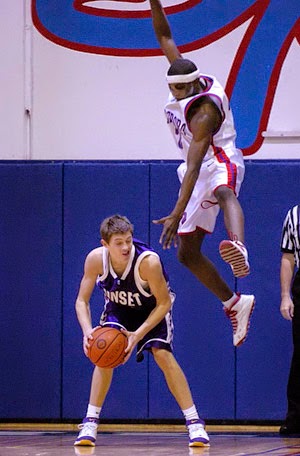
the other resistance is one three one protection, Now we consider how
Diagram 1
- In this 1-3-1 resistance it is vital that each of the five players broadens the two arms constantly; something else, this barrier will fall flat.
- This 1-3-1 Zone is a ball protection whereby 3 players are dependably between the ball and objective. All players move with the ball.
- Players 5 and 4 are the two tallest and best rebounder in the group. Player 3 ought to be your next best rebounder.
- Players 1 and 2 are the two speedier players in your group
- In this succession, all players have moved positions as the ball was either spilled or passed. The secret to this guard is to permit the ball into the corner, where the trap is sprung.
- Notice that 3 players are adjusted amongst ball and wicker bin. Weakside player 3 has climbed and into the part as an interceptor and safeguard against the high post region.
- Keep in mind that all players must keep their arms stretched out from their sides. This makes the figment there is no place to run with an infiltrating drive.
Diagram 3
- The trap is sprung! 5 has moved out to the corner to start the trap with 2.
- It is most imperative that 2 and 5 don't slap at the ball, nor let the hostile player split their safeguard. They should keep the two arms up trusting the player should have a pass which 1, 4 or 3 could capture, or redirect.
- Notice the bouncing back places of 1, 4 and 3 shot the hostile player has the capacity to get a shot off from the corner.
Diagram 4
- A skip pass was made to the frail side and every single guarded player balanced positions with the flight of the ball.
- Remember we need to enable the ball to get to the corner, where the trap can be sprung.
- You can change the look of this protection by trap, or no trap. Once in a while, the no trap barrier influences the adversary to end up plainly smug and more helpless to the trap resistance.
- Make certain each player comprehends the significance of keeping the arms up and stretched out from the sides. On the off chance that they need a rest, they can do that on the seat, not on the floor.
Diagram 5
- Once more, players have moved with the development of the ball and 3 players remain between the ball and the wicker container.
Diagram 6
- On this side of the floor 4 and 3 starts the trap and 5, who was one of the initiators on the inverse side of the floor is between the ball and the wicker bin.
- Keep in mind: 3 and 4 must not slap at the ball, but rather keep their arms up. The goal here is a capture attempt of a high hurl go by 1, 2 or 5





















